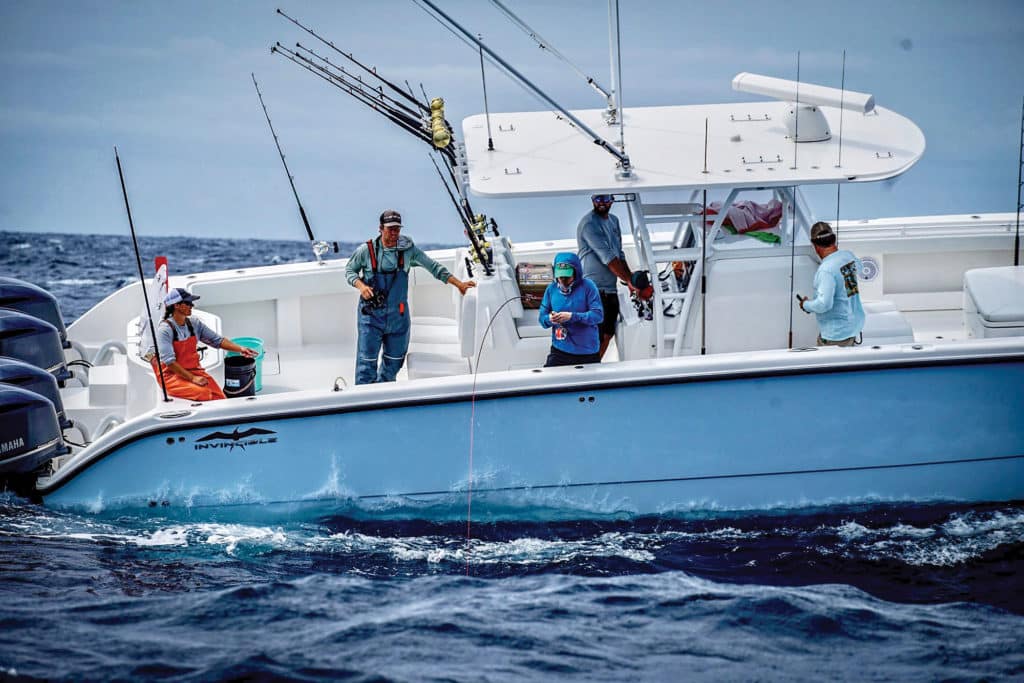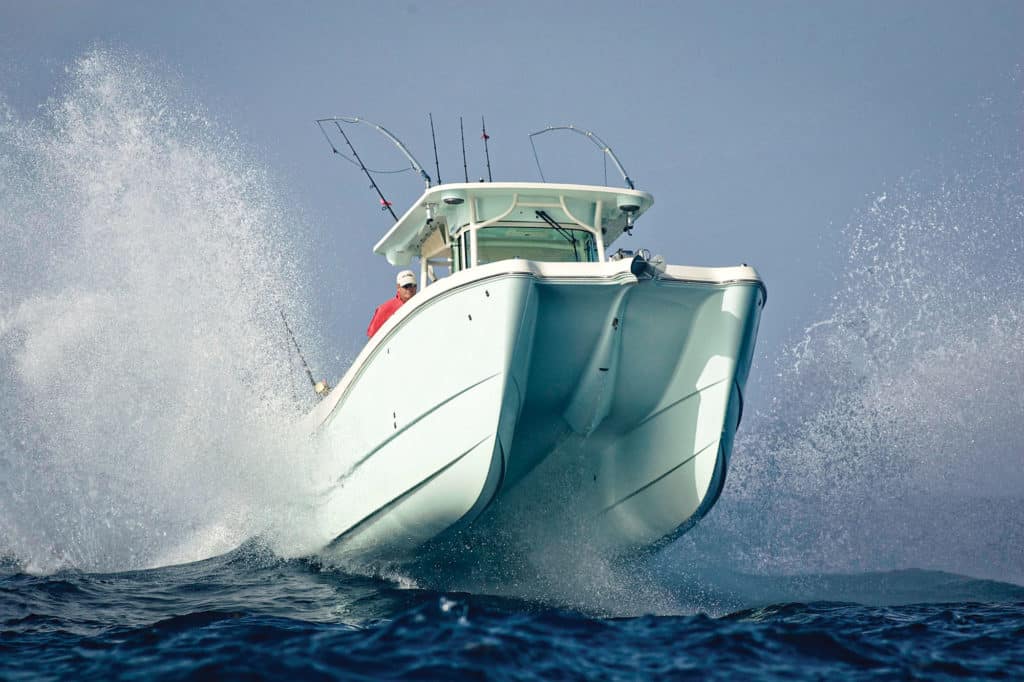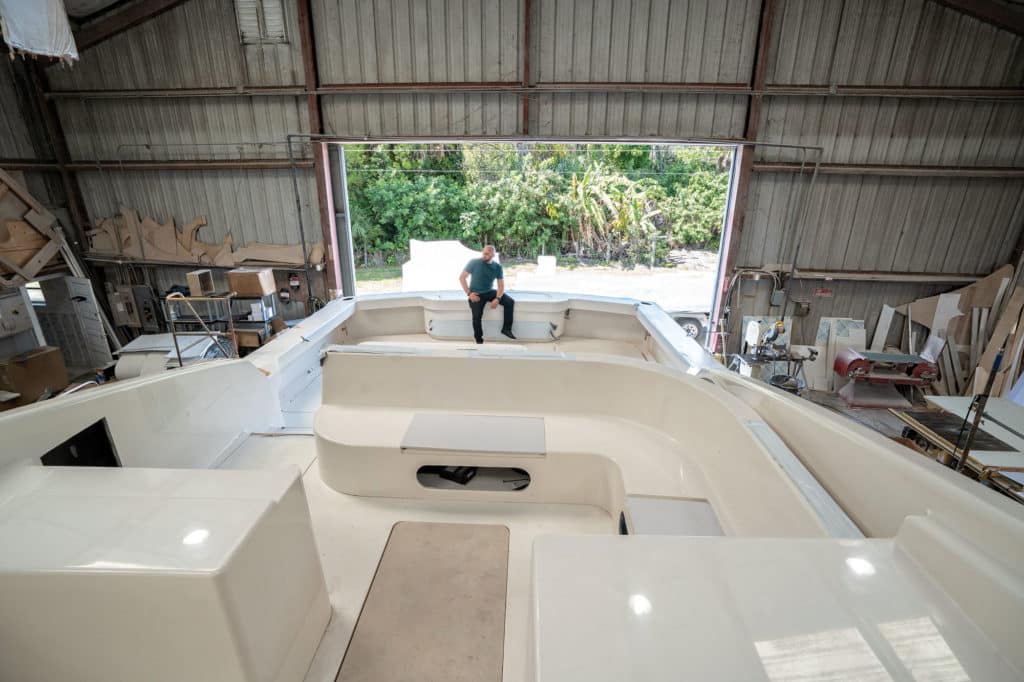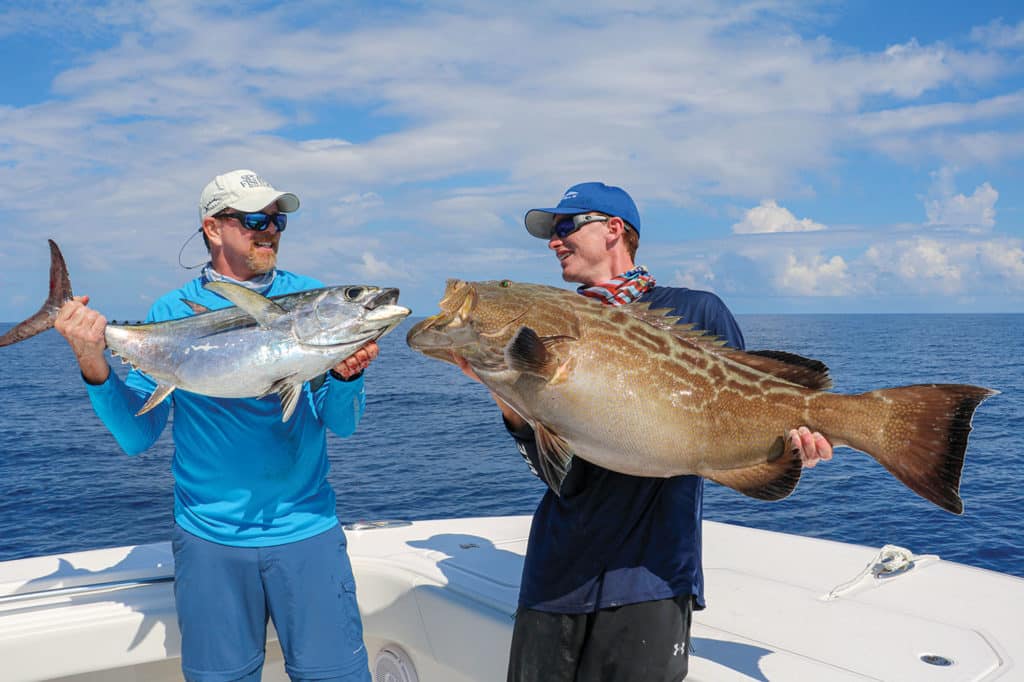
Say the word “catamaran” in the United States, and many offshore anglers cannot contain their eye roll. “Catamaran” and “multihull” historically described sailboats, offshore racers and ferries. Not fishing boats.
But in the past decade, new multihull designs have changed the minds of many early naysayers in this country.
“Certain parts of the world embraced cats a long time ago—places like South Africa, Australia and New Zealand, where the distances are great and the seas can be pretty rough,” says yacht designer Michael Peters, well-known in the fishing world for creating everything from large inboard sport-fishing vessels to stepped-hull center-consoles. “Yet, the American market never did [embrace cats]. It seems that nobody really got the attention until Freeman [Boatworks]. Why that was, I couldn’t completely explain, but suddenly there was a boat that seemed to get good balance and aesthetics, and the fishing world took notice.”
Boating anglers who already own deep-V hulls generally stay with V’s, says Bill Cordes, director of sales for Invincible Boats in South Florida. “But we’re getting new looks from guys who are cat guys, who are looking for a bigger alternative.”
Invincible introduced 40-, 37-, 35- and 33-foot catamaran offshore-fishing boats over the past three years, and yet remains successful with its popular stepped-V-hull vessels.
Invincible and companies like Freeman, World Cat, SeaHunter, Sea Cat, Insetta and Calcutta are driving a resurgence in multihull-boat building, particularly in the offshore-fishing world. Calcutta splashed its new 480 this summer; TAG Boats, a new South Carolina company, introduced a 36-footer, with plans for 30- and 43-footers; Barker Boatworks will soon debut a 40-foot cat, and HHH BoatWorks has released a custom 35-footer.
Cat Pros/Cat Cons
Depending on how they’re built, cats can offer some general advantages over V-hulls, including a smoother ride in rough head seas, a broader and more stable platform with little roll while drifting, shallower draft, better fuel efficiency and greater deck space.
But old designs featured fatal flaws, including bow steering and pulling or jerking in certain sea conditions. In a following sea, “they could be a complete handful,” says Peters, who spent 25 years building offshore racing catamarans. “In high-speed turns, they do what we call a ‘destroyer turn,’ as in a Navy vessel. They bank outboard.”

The cats of the 1980s fell short for a variety of reasons. “Early designs were flawed. They were somebody’s backyard dream,” says Steve Ellis, who founded Florida-based Calcutta Boats in 1996. “They didn’t have enough reserve buoyancy, and they all bow-steered really badly and sneezed really badly.” (Sneezing occurs when spray shoots out the front of the tunnel and blows back toward the helm.)
Their knife-edge entry angles could easily bury the bow into oncoming waves. Few cats were really designed by naval architects, according to Ellis. Calcuttas and many of today’s modern cat builds come from the desks of designers such as Jim Ryan, of Locus International, who drew up the Calcutta 480.
Peters says the resurgence of the planing catamaran (those that rise up on top of the water rather than plow through it), and its subsequent redesign, has resulted from a perfect merger of hull technology and more-powerful outboards, which put these boats in the 60-plus mph range.

The Latest Evolution
Today’s more-popular catamaran designs really started with Billy Freeman, who founded Freeman Boatworks in South Carolina in 2006, after years of working in boatyards and welding shops, and cutting up old hulls to rebuild them in his off time. “I bought an old cat and wanted something bigger and better,” Freeman says. “I called up [naval design engineer] Jesse Rhodes, who was an unknown back then, and I said I wanted to design a cat. I said, ‘If it doesn’t work, it’s on me.’”
It worked.
Freeman started calling fishing guides in Venice, Louisiana, who make their living running well offshore into sometimes-gnarly seas. “I didn’t have to talk them into a cat,” he says.
Freeman’s boats also looked better than traditional boxy cat boats, which feature near-vertical sides. That inspired longtime multihull specialist World Cat to create its X series, beginning with the 280CC-X in 2017.
Invincible’s Cordes says that the evolving industry piqued his company’s interest. “I think the overall versatility of the boat has got the attention of a lot of folks,” he says. “The sheer volume of storage, and then you get into the fishing platform that it is. It really is something new and exciting.”
Design Solutions
Multihulls can sport asymmetrical or symmetrical sponsons. From the bow, asymmetrical sponsons look like a V-hull split down the middle: The inside sponson edges line up straight from hull bottom to the water, and the outside edges angle. The symmetrical hull looks like two small V-hulls side by side.
Asymmetrical sponsons force more air down through the tunnel to create lift, says Rob Coffey, director of sales and marketing for southeast Georgia-based Insetta Boatworks, which builds a 45-foot semicustom asymmetrical cat.
Coffey says that the asymmetrical sponsons float higher and help the boat turn with less outboard force.
Insettas, Invincibles and several other brands also design steps into their sponsons. Steps do for cats what they do for V’s: They break the surface tension, and create greater lift, speed and efficiency.

With asymmetrical sponsons, “you’ve helped correct the turning, but you’ve not made the head-sea ride quite as good,” says yacht designer Michael Peters, who recently created the new 40 HPC cat for Barker Boatworks in Sarasota, Florida. “We’re really at the beginning of the curve in perfecting the designs.”
To help the new Barker perform better in a head sea, Peters says he made the bow fuller, not as sharp and pointed. A too-sharp angle of entry means the bow can act like a rudder. “What we opted for was saying, ‘If you put this much horsepower in the boat to go 60-plus mph, we want a boat that can absorb all that horsepower and not become difficult to drive,’” he says. “We opted for a boat that we feel will bank more appropriately in a turn.”
The new designs address the old and uncomfortable nature of cats in turns, and design features also tackled the sneezing that showers boats with seawater. For instance, World Cat’s Vector Pod in the tunnel near the bow helps break up and aerate incoming water, reducing friction. As air and water pass through the narrowing tunnel aft, the mixture increases in velocity with a subsequent decrease in forward pressure.
Designs will continue to evolve, Peters says. “We’ve got a perfect confluence of things happening. Development happens when things overlap at the same time.”





